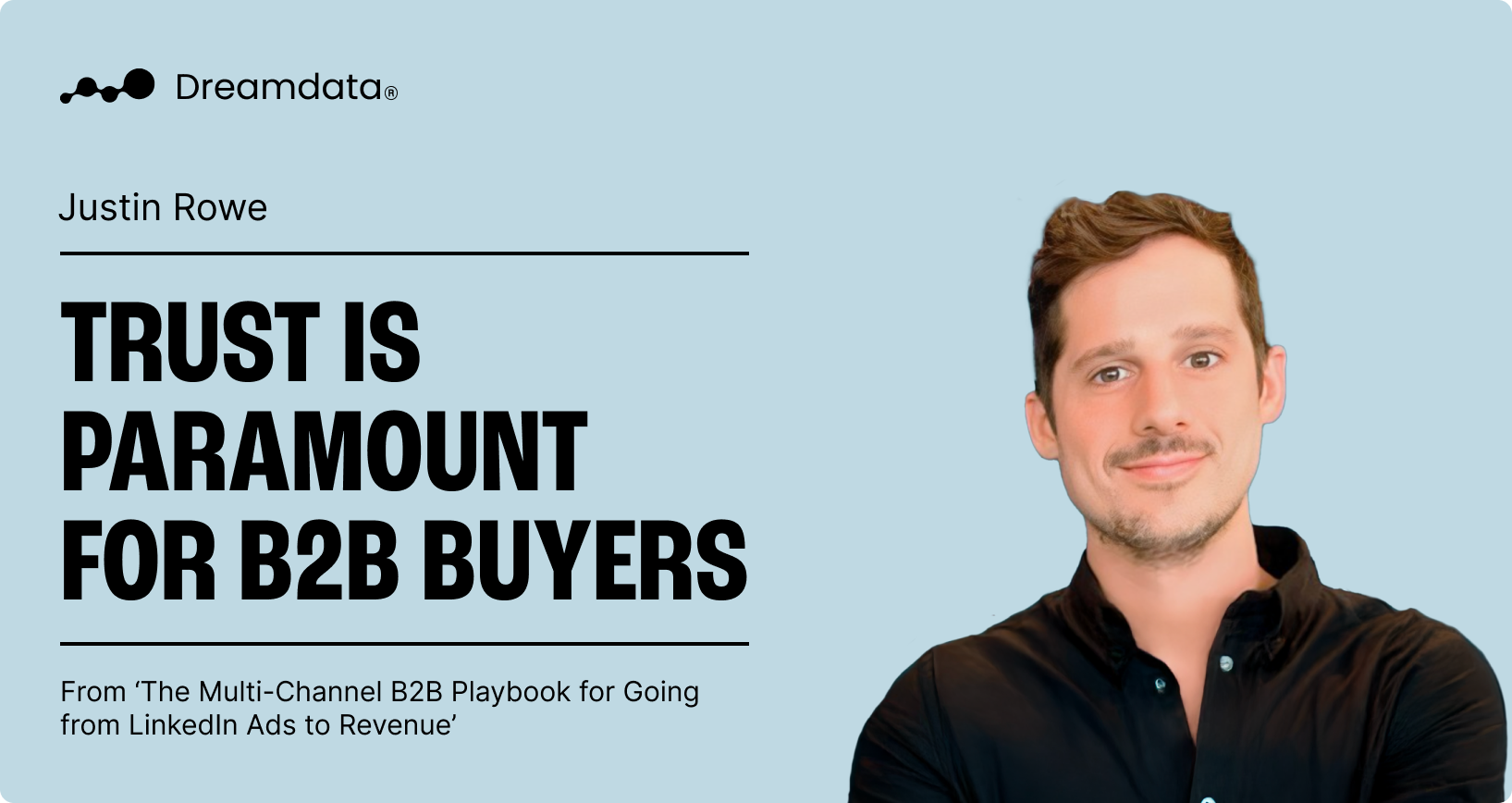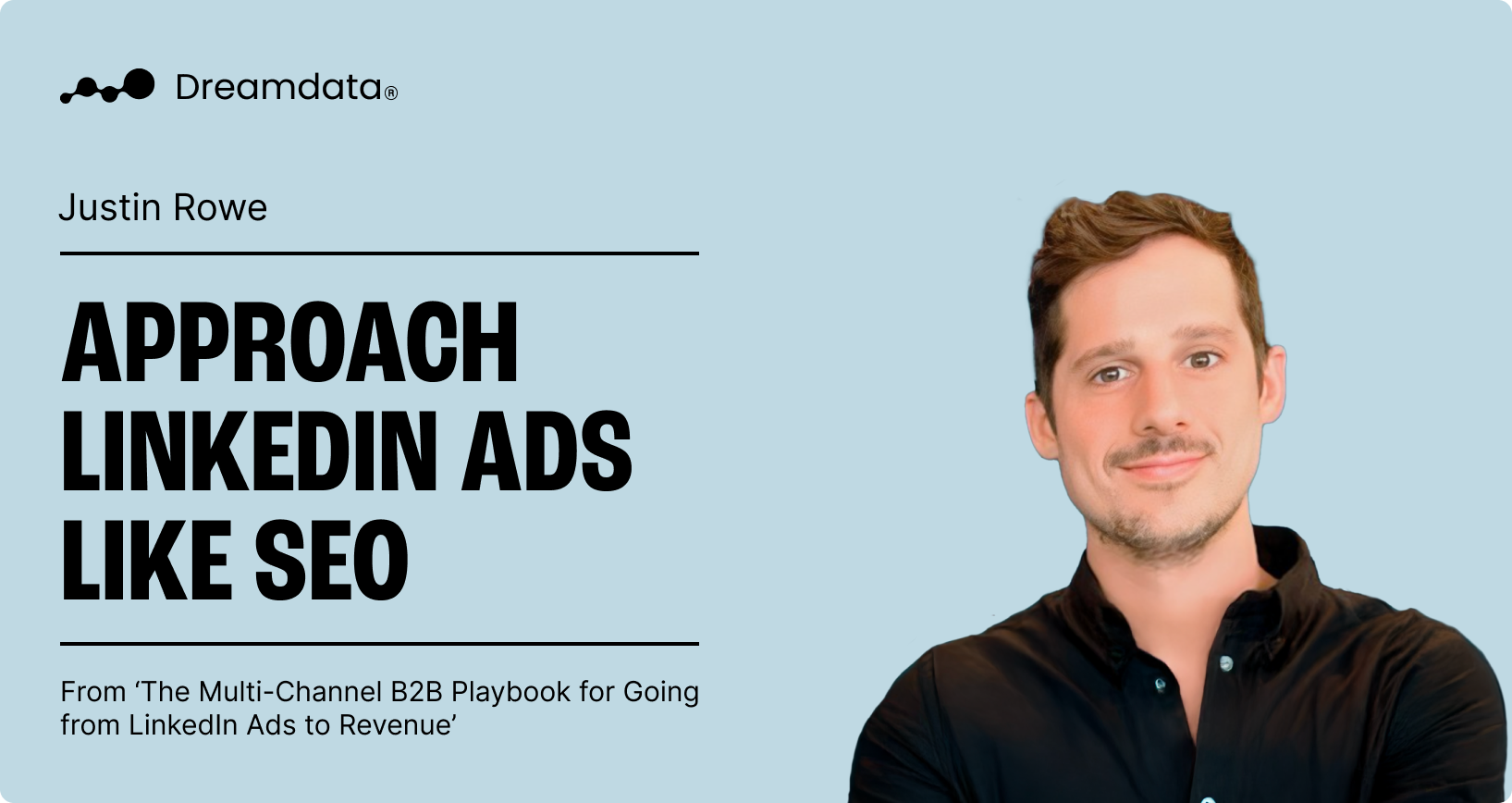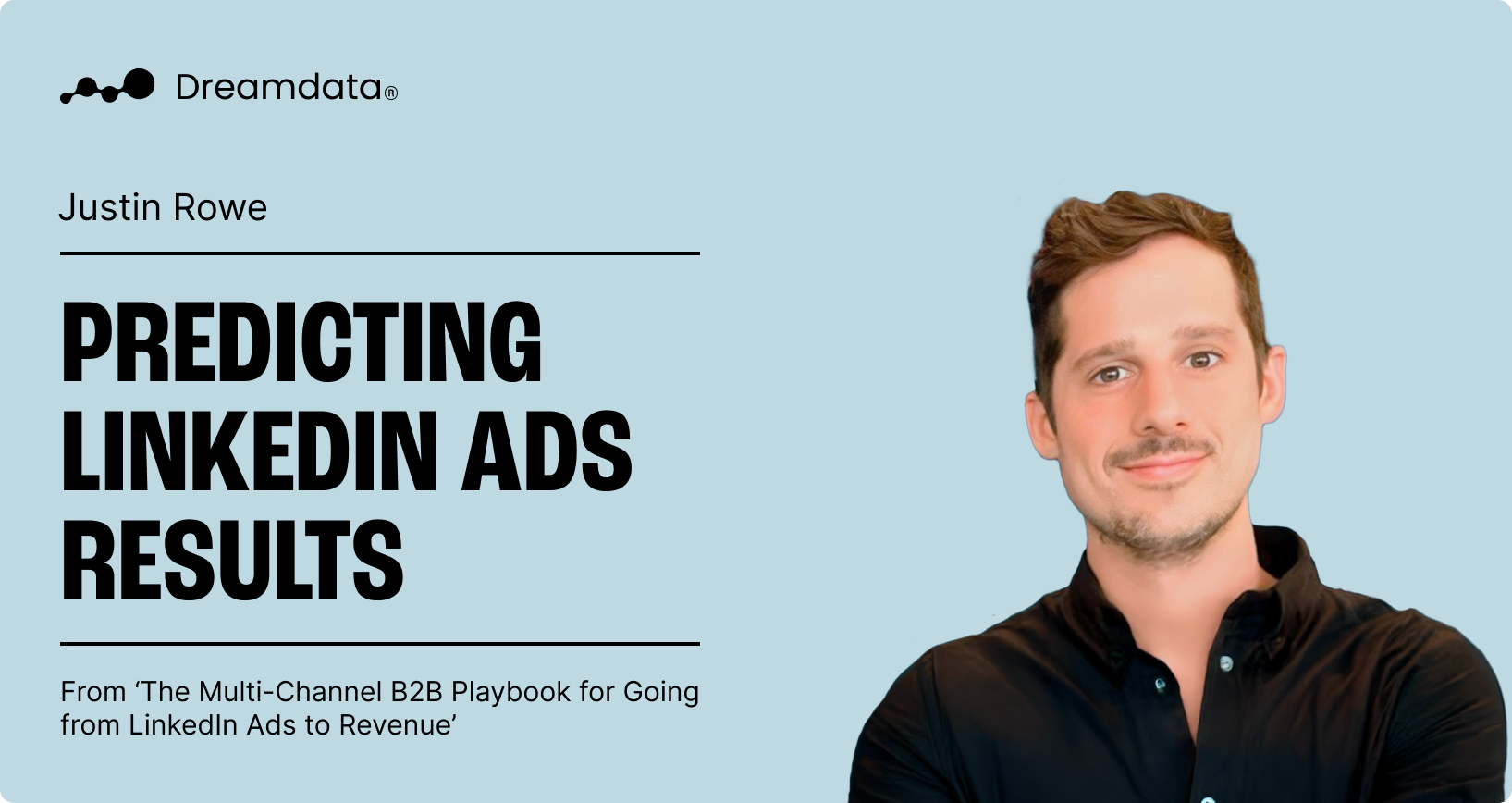The Multi-Channel Playbook for Going From LinkedIn Ads to Revenue
Most B2B companies are playing the game all wrong when it comes to generating revenue from LinkedIn Ads.
Justin Rowe, Founder and CMO of Impactable, presents a clear strategy to change that.
He argues that LinkedIn's real power is unlocked when it’s treated as a vital part of a cohesive, multi-channel B2B marketing plan focused directly on revenue generation.
Drawing from his insights shared on the Attributed Podcast, this article breaks down Justin's LinkedIn Ads to revenue playbook.
Listen to the entire conversation here.
Why Trust Is Your Most Valuable Asset
The way B2B customers make purchasing decisions has inevitably changed. They are now more informed and conduct extensive research independently.
As a consequence, before seriously considering a product or service, customers need to establish a strong sense of trust in the provider’s expertise and a genuine understanding of their specific challenges.
Showing people what you do, how you do it, what your process is attracts so much more trust and attention in the right way than almost any kind of marketing.
To establish expert status, Justin champions a shift in content, moving towards company founders or key internal specialists becoming the visible, accessible faces and voices of the brand.
LinkedIn Ads as a Long-Term Strategy, Not a Quick Fix
The need for trust directly influences how B2B marketers should perceive and utilize platforms like LinkedIn.
If the main objective is immediate, short-term sales, LinkedIn advertising may be frustrating.
This is because B2B purchasing decisions typically involve longer consideration periods and multiple decision-makers, and LinkedIn's environment is geared towards building professional trust over time.
In my mind, LinkedIn is way more like SEO, it takes time to build momentum. It's a trust-building kind of longer term... So it's more of a long game.
Justin suggests LinkedIn’s rhythm and impact are more comparable to established, long-term marketing strategies, such as SEO or strategic content marketing.
He proposes that LinkedIn’s strength, particularly within a broader multi-channel strategy, is its capacity to nurture and qualify traffic that has been generated by other marketing activities.
The Multi-Channel B2B Revenue Ecosystem
If LinkedIn plays a part in a longer-term strategy, its integration with other marketing channels is key.
Justin encourages creating a deeply connected, multi-channel "ecosystem”. This model requires a coordinated effort between channels, where each interaction builds upon the previous one, guiding potential customers through what is often a complex decision-making process.
This ecosystem requires a balance and mix of different traffic types, such as high-intent search traffic, which often has a shorter sales cycle, and high-quality LinkedIn traffic, which typically involves a longer sales cycle.
The goal is for these elements to work together to achieve the most efficient results, rather than channels living and dying on their own.
Measuring the True Impact of Multiple Channels
In a multi-channel environment, relying on simplistic attribution models, like last-click, can be misleading.
These types of models often fail to value important interactions that occur earlier or midway through the customer journey, especially on platforms such as LinkedIn.
To gain a more accurate view, Justin proposes what he calls a triangulate the truth method.
This involves combining insights from channel attribution (which he terms channel influence), direct customer feedback through self-attribution (asking prospects how they found you), and the detailed journey mapping available from "software attribution" tools (like Dreamdata).
This provides a more solid foundation for decision-making.
Quality Pipeline Over Sheer Volume
This more sophisticated measurement approach naturally leads to a critical question: What is the actual goal of these marketing efforts?
According to Justin, it’s not merely about generating a large volume of low-cost leads.
Justin cautions that if a marketer's performance is judged solely on their ability to secure the most leads for the least amount of money, the only logical conclusion will be that they will find the cheapest, lowest quality leads.
The essential change in thinking, he contends, is to aim for a quality pipeline that converts at a higher rate.
Understanding Timelines and Effective Tactics
Having a grasp of this multi-channel, trust-based, quality-focused strategy is important, but implementing it effectively and knowing what results to expect requires further insight.
Justin offers guidance on the timelines involved, noting that these can vary considerably based on a company's existing marketing maturity and foundation.
For businesses starting with little to no marketing foundation, he suggests that building a significant LinkedIn presence might take six months and five to seven thousand dollars a month of ad spend.
In contrast, companies that already have decent website traffic from established SEO and paid search efforts might see a return on investment from LinkedIn retargeting in three to four months with four or five thousand dollars of ad spend.
The quickest results are typically seen by companies with substantial existing website traffic.
Optimizing Your B2B LinkedIn Ad Performance
For marketers looking for immediate improvements, Justin touches on a couple of specific tactical adjustments.
First, he advises carefully monitoring ad frequency, suggesting an aim of around 15 to 20 impressions within a 90-day retargeting period.
He also recommends setting ads to rotate evenly in retargeting campaigns. This ensures that prospects see a variety of unique messages, rather than being repeatedly shown the same few advertisements, which can significantly enhance the efficiency of ad spend.
Conclusion
Justin’s approach to LinkedIn advertising is an encouragement for B2B marketers to adopt a more integrated, patient, and intelligent strategy for generating revenue.
In this framework, LinkedIn is a key strategic element built on trust and designed to produce not just leads, but a high-quality sales pipeline. For businesses navigating the complexities of the B2B market, adopting such a strategic view of LinkedIn may well be essential for sustainable growth.
About the speaker
Justin Rowe is the Founder and CMO of Impactable, a specialized LinkedIn Ads agency. With a unique journey that began in the restaurant industry, Justin has become a leading expert in leveraging LinkedIn as a core component of effective multi-channel marketing strategies.








